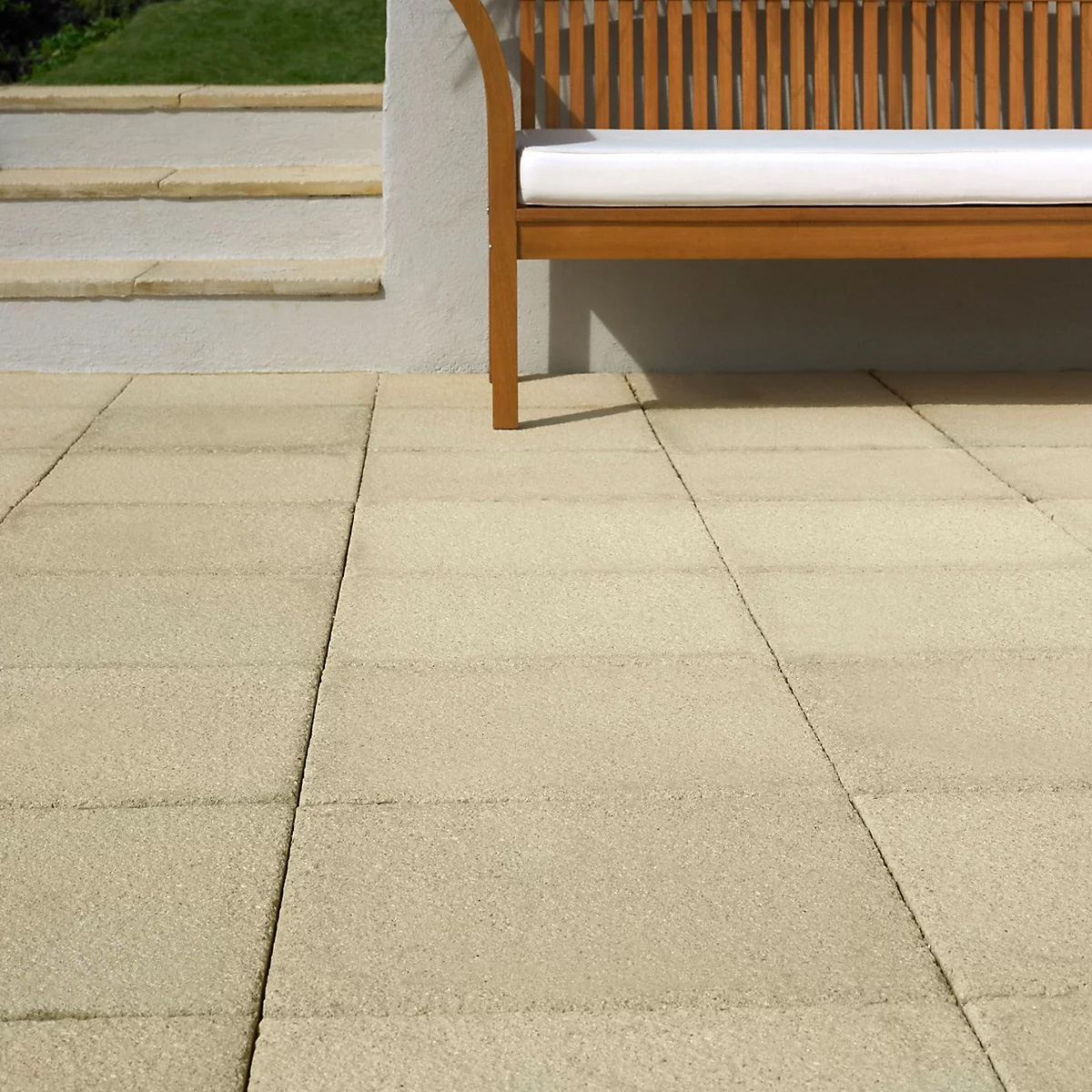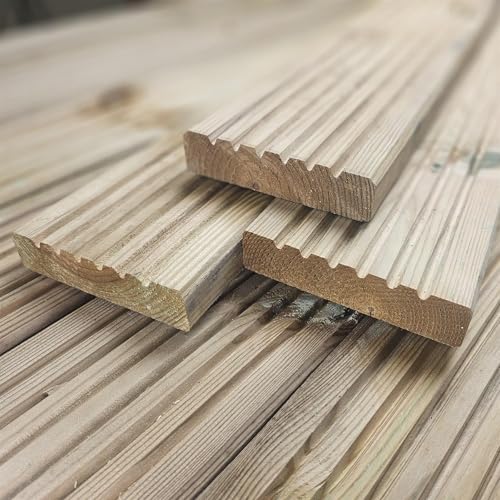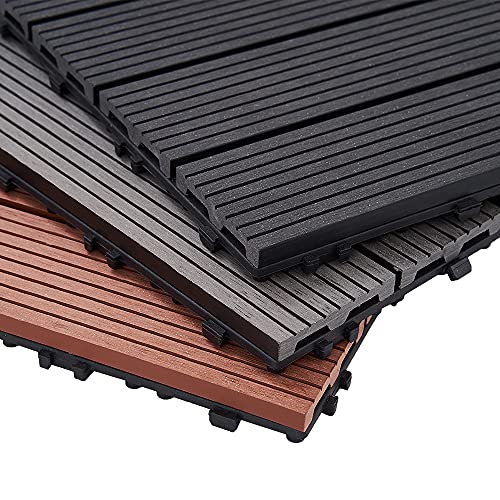Patio or decking? Experts reveal the pros, cons, and costs to help you make the right choice
When it’s time to upgrade your outdoor space, choosing between a patio or decking is a common conundrum. Follow the smart advice in his guide
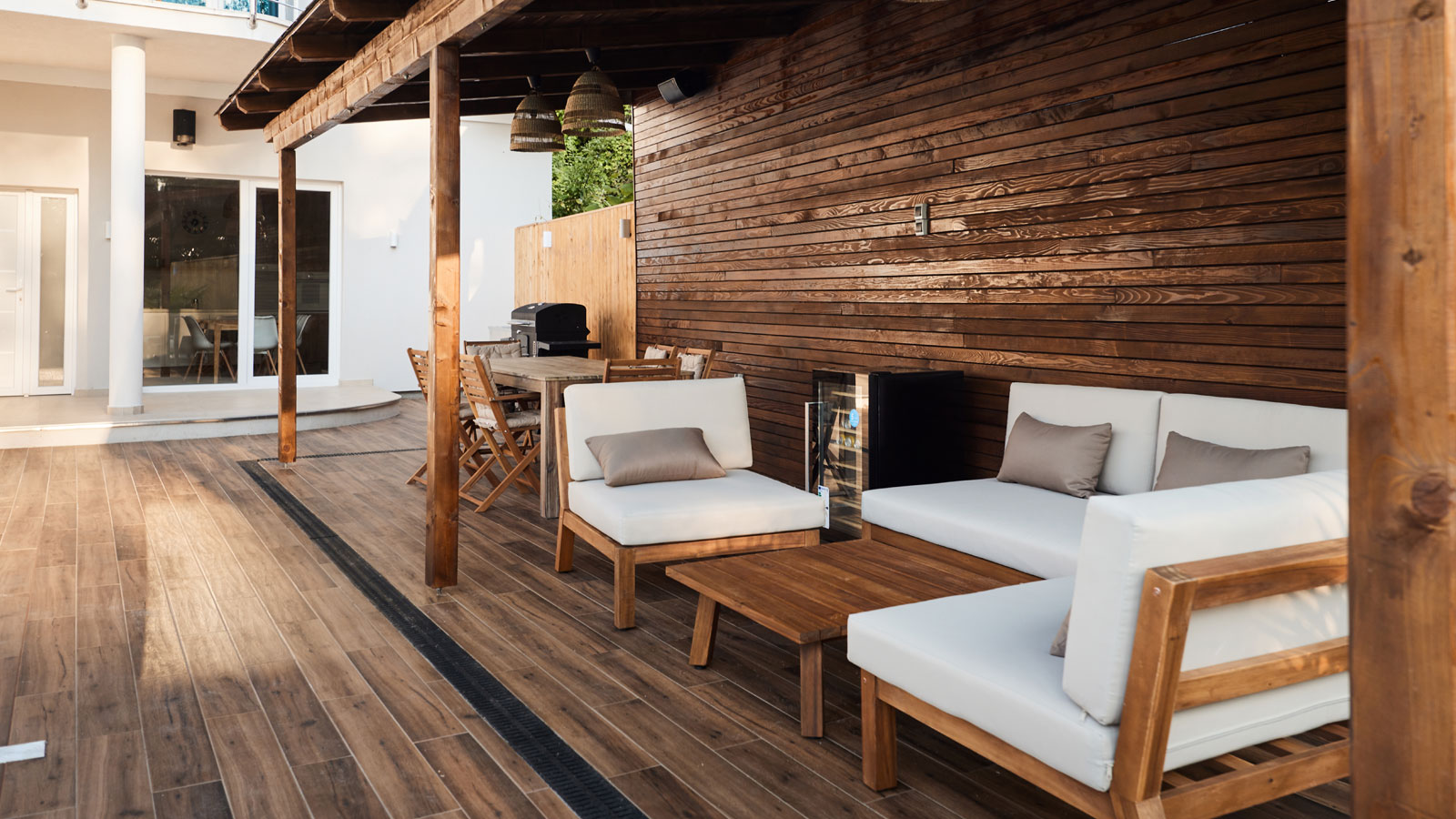
Before choosing between patio or decking, there’s a whole host of considerations to think about before you dive in and make a choice. What’s your budget? What size space do you have? How often is it going to be used? These are just a few questions you need to be asking yourself before you start.
Both options have pros and cons, which is why it isn’t easy to decide on your patio or garden decking ideas. But don’t worry – this guide offers plenty of expert advice on both options, so it won’t be long before you can start building your dream outdoor space.

Simon Parry is a TrexPro decking installer and director of Simon Parry Gardening & Landscaping. Established in 2011, the specialist gardening company is based in south Birmingham and offers a range of services: from basic mowing and maintenance, to full garden transformations.
Patio or decking: Questions to ask yourself
Before making a decision or proceeding too far with your decking or patio ideas, there are a few things to consider. Simon Parry, TrexPro decking installer and director of Simon Parry Gardening & Landscaping, says: “First things first, think about the placement of your patio or decking project." He adds, "Consider where the sun hits your garden and where you would benefit most from decking or patio."
Placement of your patio or decking isn't the only consideration, as Parry shares, "Next is size – if you’re unsure what size you should go for, I’d always advise going slightly bigger rather than slightly smaller." He adds, "You’ll never regret having that extra two feet all the way around, but you might regret going smaller the first time your chair falls off the edge due to lack of room!"
Finally, he suggests you think about the purpose of your patio/decking, "What will you be using it for? Would you be using it as an outdoor dining area, adding cosy seating for quiet afternoons in the sun or even for outdoor activities like yoga?" He adds, "Thinking about this will help determine the size and style of your patio or deck.”
Alongside the more obvious considerations, ask yourself the following questions to help your decision-making.
- How much maintenance are you prepared for?
- Which materials will work best with your house style?
- What furniture or other items will be standing on the deck or patio?
- What is your budget?
- Will the area be exposed to water and/or heat?
Try these patio and decking options for your garden
Decide on a garden style
Before you choose between a patio or decking you should have a think about the garden styles you prefer and what will suit your home.
While this alone won't necessarily give you a definite answer to your dilemma, it should help you begin to form some ideas based on which materials will work best in your setting.
Bring your dream home to life with expert advice, how to guides and design inspiration. Sign up for our newsletter and get two free tickets to a Homebuilding & Renovating Show near you.
Those after a contemporary-style garden, for example, will be looking for a solution that will offer clean lines and minimal details. On the other hand, if it is a more rustic, traditional look you are aiming for, you should look to materials that provide plenty of warmth, texture and character.
Of course, both patio and decking can offer contemporary and traditional options, but in honing your ideas, you will at least begin to form an idea of which may best suit your requirements.
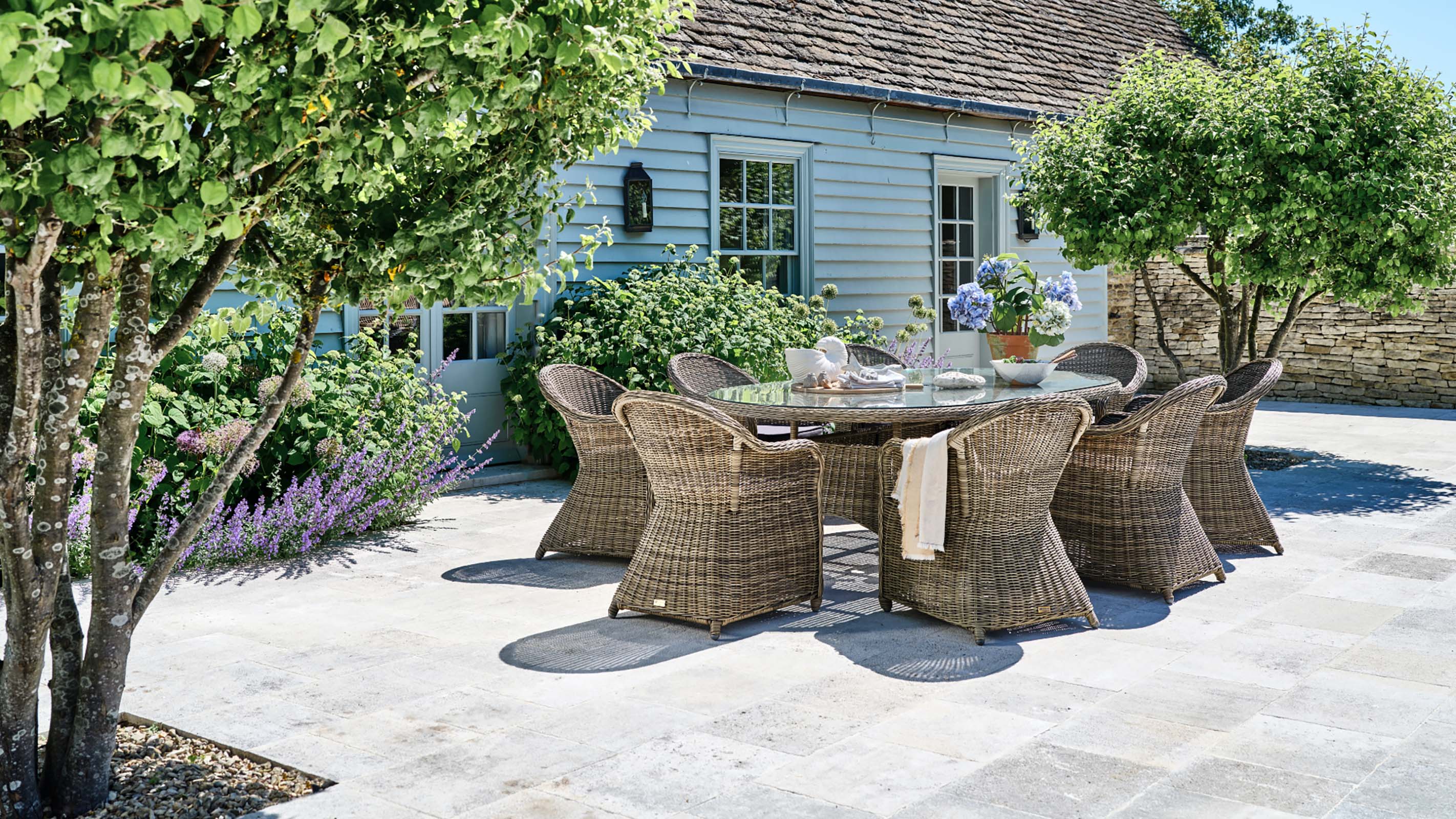

Mark has over 20 years of experience in the building sector and led Build & Plumb’s expansion into online marketplaces and now oversees its multi-million-pound operation.
Decking pros and cons
Garden decking is a popular way to create outdoor spaces for entertaining and seating. Depending on the material you choose, a range of looks can be achieved. As with patios, decking has advantages and disadvantages.
One of the advantages of decking over patios is price, as Mark Irving, Building expert at Build & Plumb, shares, "Typically, in the UK, decking is cheaper to supply and install than a patio." He adds, "On average, a standard-sized deck can cost as little as £800 to supply and install, whilst a standard-sized patio can cost a minimum of £1,700."
But these prices are only a general guideline as Irving shares, "It’s important to note that this is just an average and it can change depending on the type of materials you are using, the size of your garden and the preparation required before installation.”
The pros of decking
- Quick to construct: Although this will depend on the complexity of your deck, many designs can be up in one or two days.
- Can be installed on a DIY basis: Providing you arm yourself with the right tools, and read up on how to lay decking, installing a deck is within the capabilities of most DIYers.
- Affordable: Although this depends on the type of decking you choose, a simple softwood decking can be picked up for as little as between £3-£6/m.
- Huge range of materials to suit a variety of garden styles: Decking comes in a whole host of different varieties, from softwoods such as pine to hardwoods like redwood. Composite decking is also an option.
- Perfect for raised seating areas: Whether your garden is sloped and you want to create a level surface, or just want a raised section of seating, decking is a great solution.
The downside to decking
One of the main downsides to wooden decking is the time and effort you need to put into it to keep it in good condition and looking good. Irving says, "Decking is far higher-maintenance and more susceptible to damage than a patio. Wood decking in particular requires regular cleaning and staining to maintain its quality and appearance."
He adds, "It’s also highly susceptible to wood rot and weathering, especially in the winter months where it’s frequently exposed to moisture."
- Maintenance requirements: For timber decking to retain its looks, it needs regular care in the form of oiling, sanding or staining. It should also be cleaned. Composite decking can offer a good alternative here.
- Can become slippery: If algae is allowed to build up on timber decking, it can become slippery. However, there are non-slip decking products available.
- Can be susceptible to rot: If not properly maintained or allowed to get very wet, both softwood and hardwood decking can be prone to rot.
- Can fade: When exposed over time to UV rays, the colour of timber can fade. However, many people welcome this natural weathering process.
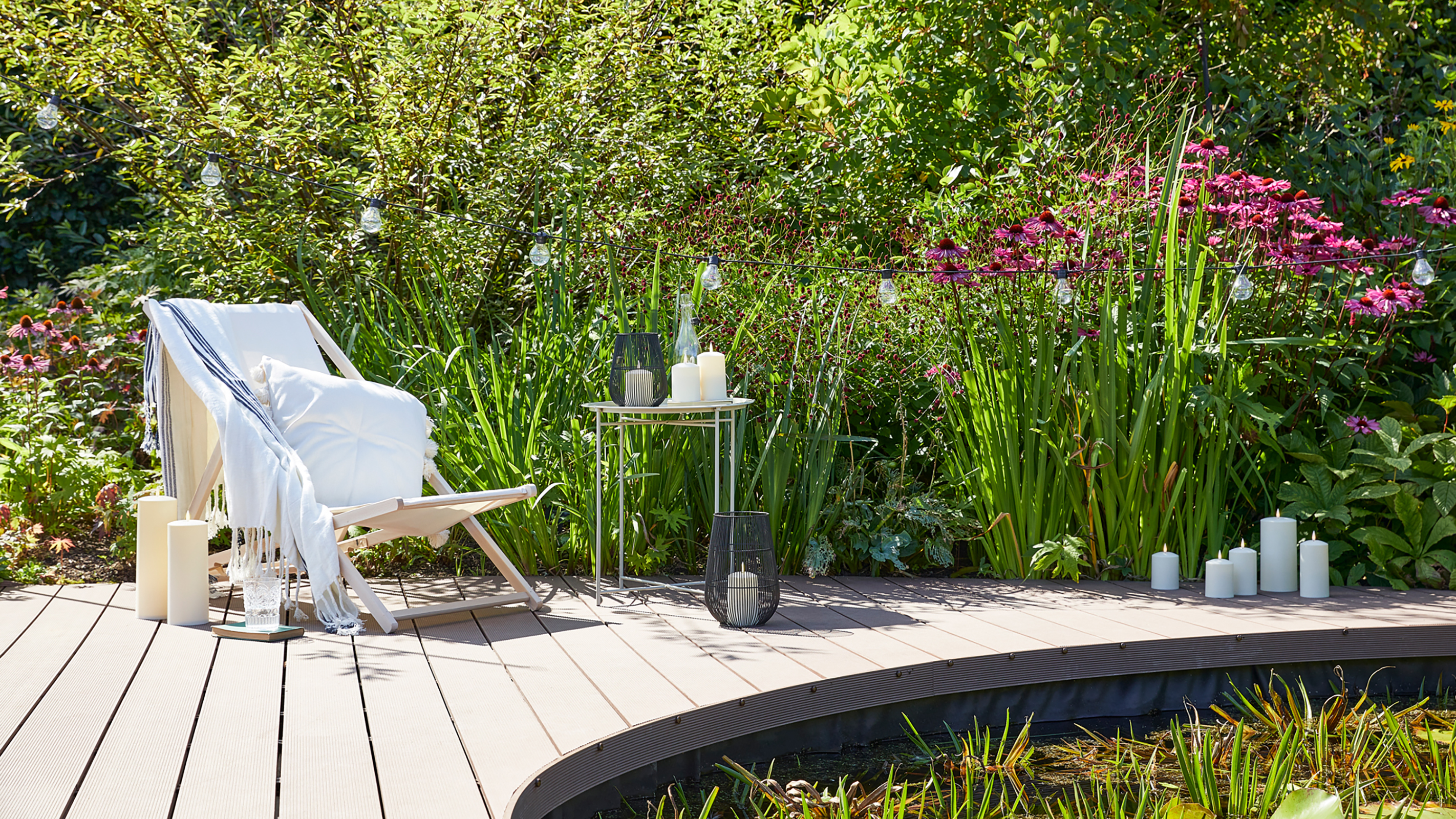
Decking material options
The pros and cons listed above strongly depend on the decking material you opt for. Although softwood decking, such as pine and and fir, is the cheapest option, it will also be more prone to damage and require more maintenance.
Hardwoods such as oak, cedar and redwood are good options, but will also require upkeep so make sure you understand how to clean decking.
Most experts strongly recommend a pressure treated timber for garden decking, although heat treated woods are often seen as superior. They are less prone to movement and have superior durability.
Composite decking is another option. Made from wood fibres combined with polymer resins, composite decking offers a non- or low-slip surface and is maintenance free. On the downside it does tend to lack the warmth and natural appearance offered by real timber decking and is expensive in comparison.
Choose a decking style
Timber decking comes in so many styles and offers so much scope in terms of colours, board widths and laying patterns that it should be possible for most people to find a style that suits them.
Those after a contemporary deck might like to consider very uniform boards in striking pale or very dark shades. For those after a more classic look, weathered boards laid in random widths can work well.
Multi-level and raised decking ideas can really create interest and make the most of small gardens, as can curved decks.
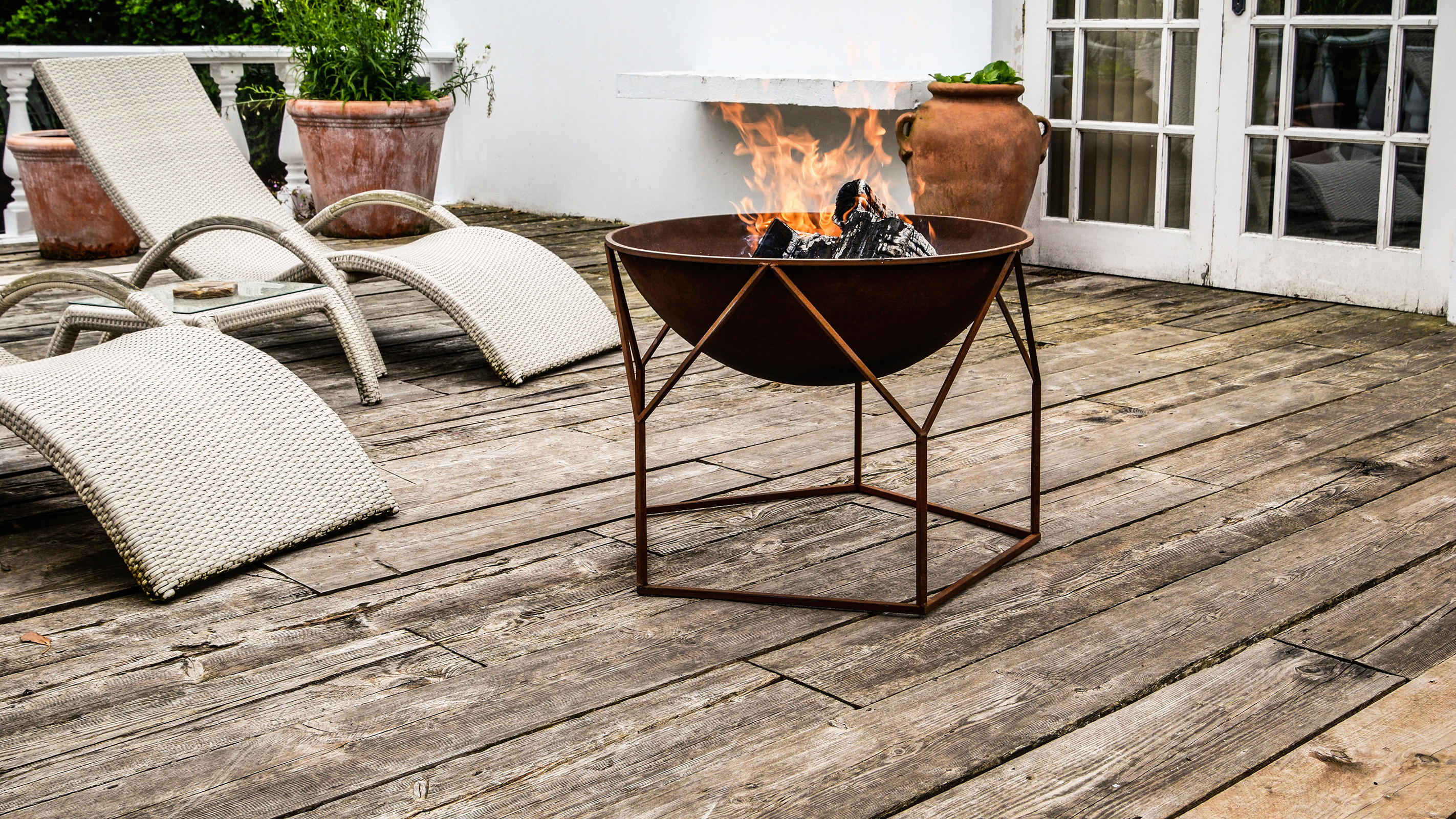
Patio pros and cons
The pros of patios
Just like decking, patios have pros and cons. It's worth noting that most patios are laid with paving or bricks, which Irving points out are durable and long-lasting, "These materials require minimal upkeep and cleaning making them the ideal low-maintenance choice for a garden."
But he adds, "Of course you will still need to clean your patio every few months, but not as frequently as wooden decking. In addition, their long-lasting nature makes them the perfect investment as they can last up to 50 years in some cases”.
- Strong: If you want to place any heavy items, such as a hot tub or sizeable table on your outdoor seating area, then a paved patio offers a sturdy surface.
- Durable: A natural stone patio, with proper foundations, can last for hundreds of years and good quality porcelains are usually sold with at least a 10-year guarantee although could be expected to last for much longer.
- Low maintenance: A yearly pressure wash should suffice when it comes to the upkeep of most natural stone paving. It may also be necessary to periodically check the grout joins between porcelain tiles.
- Huge choice of materials: Paving comes in a massive range of styles, materials and designs meaning there is literally something for everyone.
- Fireproof: If you plan on placing a firepit or similar on your patio then paving tends to be safer than a timber deck, for obvious reasons.
- Perfect for seamless flow between inside and out: Many paving products are designed to be used inside and out meaning you can create a visually unbroken flow from your internal spaces out to your patio.
The downsides of patios
Irving explains why installation can be considered a downside, “Installing a patio is not a quick process as it typically requires lengthy ground preparation. Additionally, if there are hurdles along the way it may take even longer to install, which can also increase the cost of labour”.
He also points out they are limited in use, Patios are ground level so they are only suitable for gardens on an even surface." He adds, "If your garden is sloping you may have to consider other options, like raised decking”.
- Can be tricky to lay on a DIY basis: Large paving slabs require careful cutting and can be heavy to lay alone. In addition, the right fall needs to be created to ensure good drainage.
- Require a sturdy sub-base: Just as a deck requires a sturdy frame for stability, so does a patio require a good sub-base.
- Certain materials, such as natural stone, can be costly: Materials such as granite and limestone are not cheap.
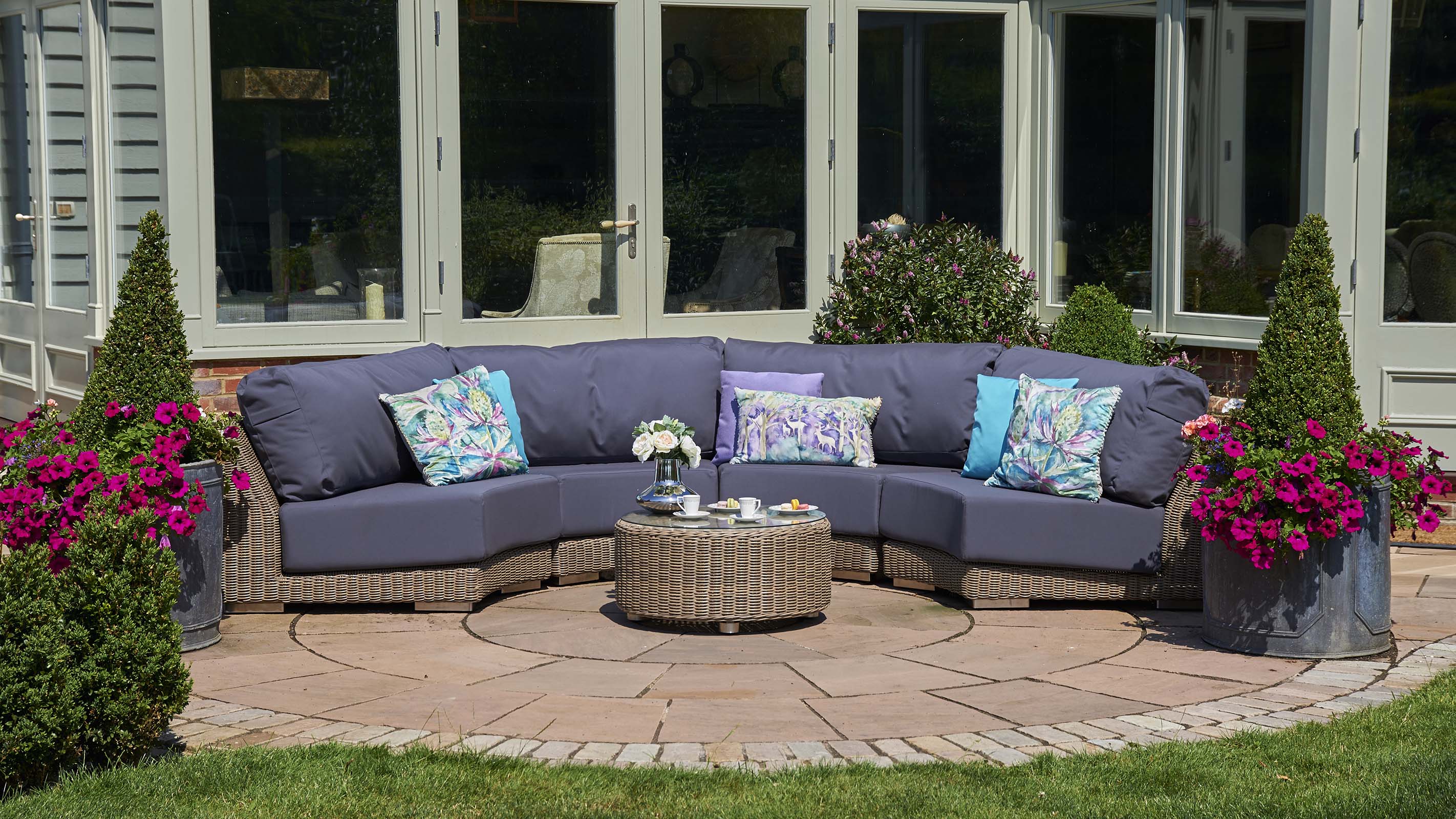
Patio materials options
There is a huge choice of materials that can be used for patios. While this is, in some respects, a good thing meaning that no matter what garden style you are aiming for, there will be something for you, it can also make choosing hard.
When it comes to garden paving ideas, there are six main patio materials that people tend to choose from:
- Concrete: The quality of concrete paving varies wildly. Some of the cheaper concrete products can look pretty unattractive and be prone to fading, however, higher quality concrete paving designed to mimic the appearance of natural stone can be very convincing.
- Reconstituted stone: Similar to concrete paving although containing small amount of real stone, you get what you pay for. It tends to lack the natural variations present in natural stone.
- Natural stone tiles: There are many different varieties of stone used for paving, including granite, sandstone, slate and limestone. Each has its own pros and cons. Although stone is durable, many varieties require sealing to retain their good looks but can be expected to last hundreds of years.
- Flagstones: Similar to stone tiles, but with a rougher, more irregular surface. They come in various thicknesses and offer a beautiful rustic appearance ideal for country gardens.
- Brick: Brick and other clay pavers add a timeless look full of warmth and charm and are perfect for smaller patios and traditional garden schemes. They can be laid in a range of patterns but are time consuming to install.
- Porcelain tiles: Porcelain tiles are a fantastic option for patios, being non-porous, frost resistant and available in a fantastic range of colours and patterns. On the downside, some very smooth tiles can be slippery wet wet so provide adequate drainage.
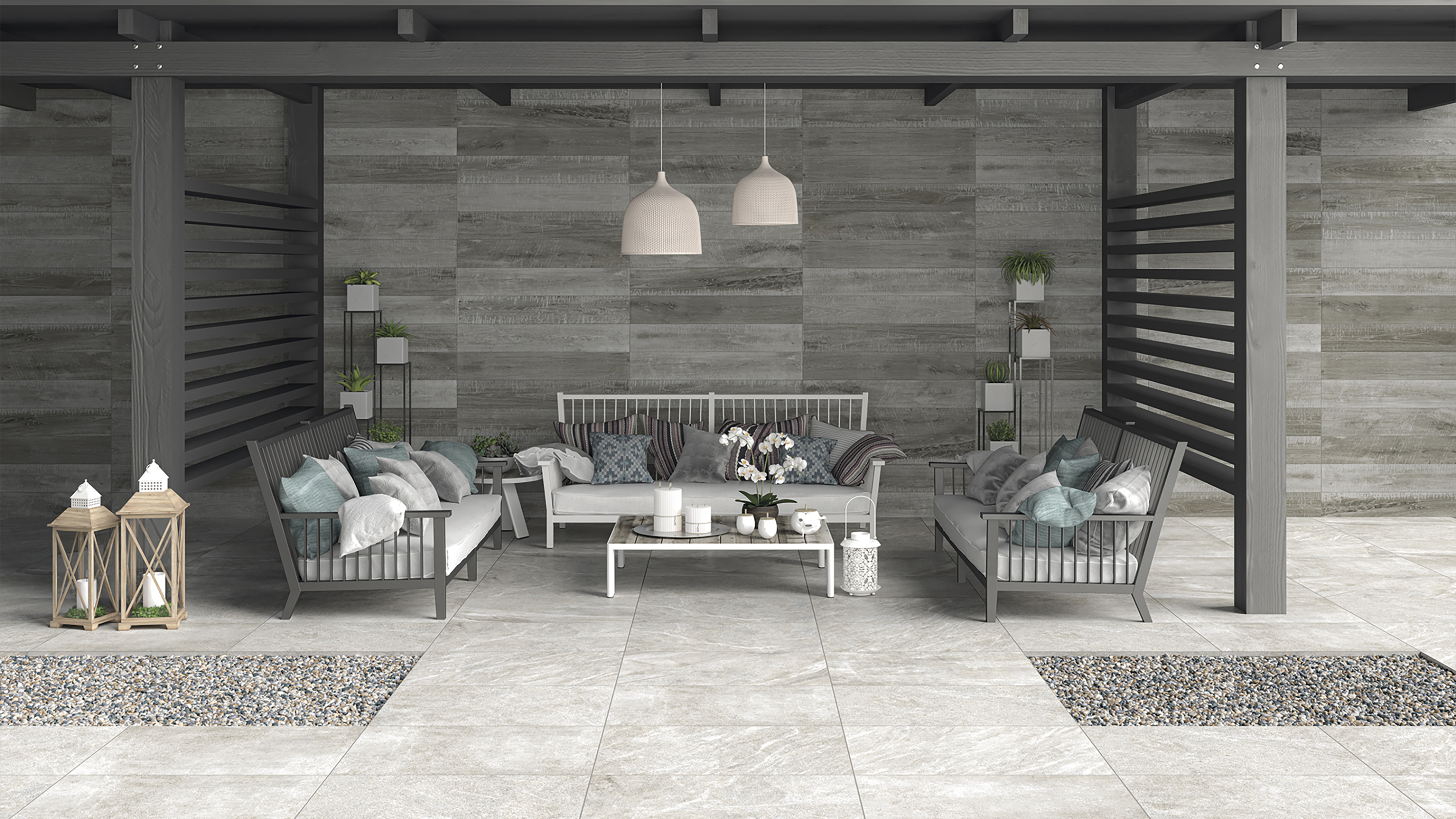
Choose a patio style
Patios can be designed in all kinds of shapes and sizes, from rectangular to circular. All patios should be laid on a good, sturdy and level sub-base. The depth and make up of the sub-base will depend on your patio material, but they commonly consists of MOT Type 1 hardcore, sharp sand and a layer of mortar.
You will also need to calculate the fall required in order for water to drain off your patio – this is a very gradual slope that ensures water won't collect.
FAQs
Is decking cheaper than paving?
When it comes to the cost difference between decking and patios it really does depend on the material you choose.
Decking prices start at £4-£6/m for softwood, rising to £15/m for hardwood decking. Composite decking is more expensive at between £15-£30/m.
Paving for patios costs from around £20/m2 for concrete tiles, while porcelain tiles start from around £30/m2. Natural stone tends to be one of the more expensive options, depending on the variety you go for, with prices starting from at least £35/m2.
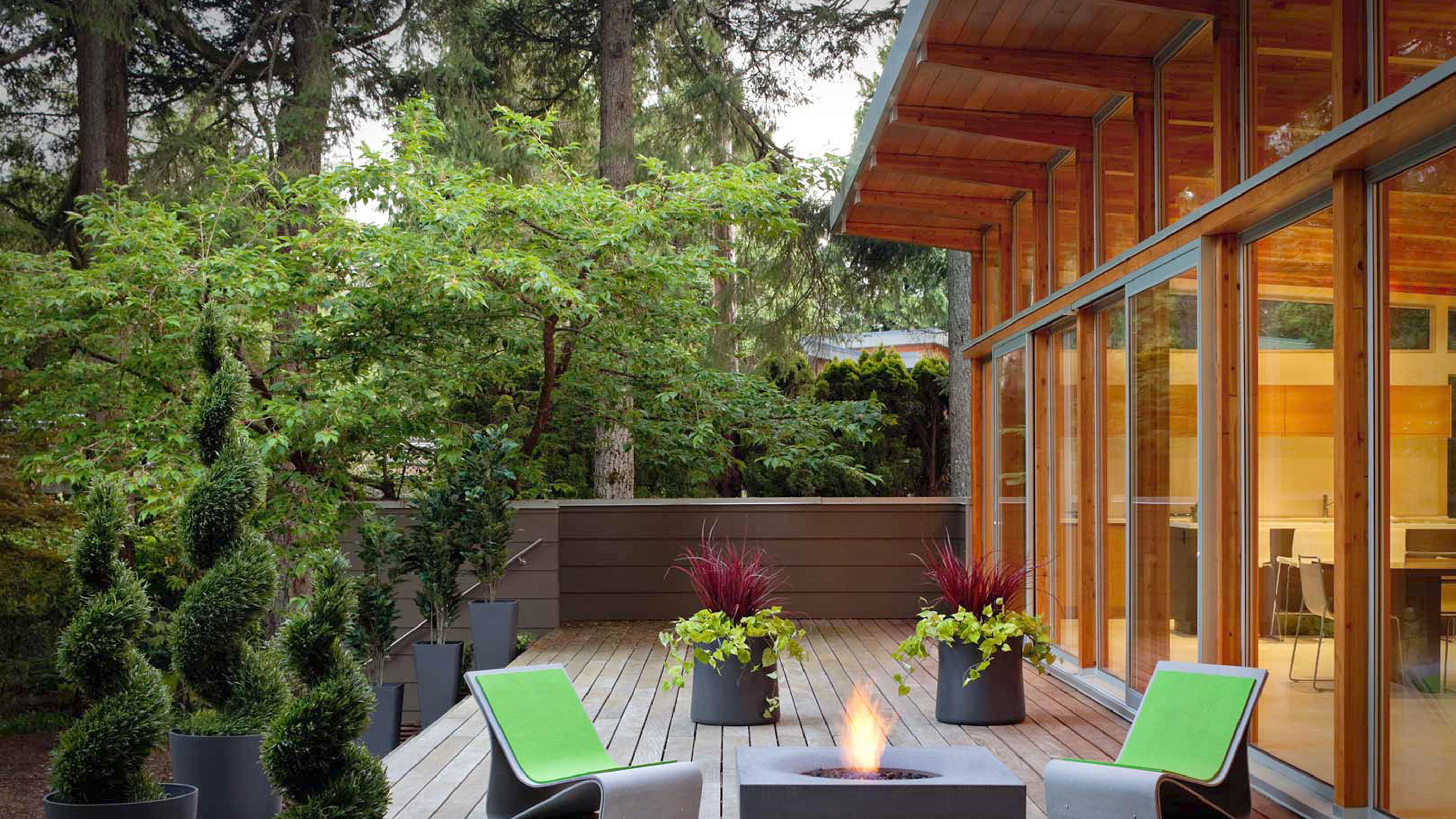
Can I combine decking and patio slabs?
If you still can't decide between a patio and decking, why not have both? There is nothing to stop you from combining paving materials with decked areas – in fact, this approach can lead to some of the most characterful and interesting patio designs.
Parry says, "Using both materials is great for creating different areas for different purposes – one could be used for sit-down outdoor meals, whilst the other could be a more casual space for relaxing and enjoying the sunshine."
To combine a patio and decking, it's best to use materials that complement each other. Parry recommends, "A contemporary paving like porcelain or polished sandstone works well with grey decking shades for a modern looking garden, whilst a rustic sandstone or limestone works well with brown decking colours.”
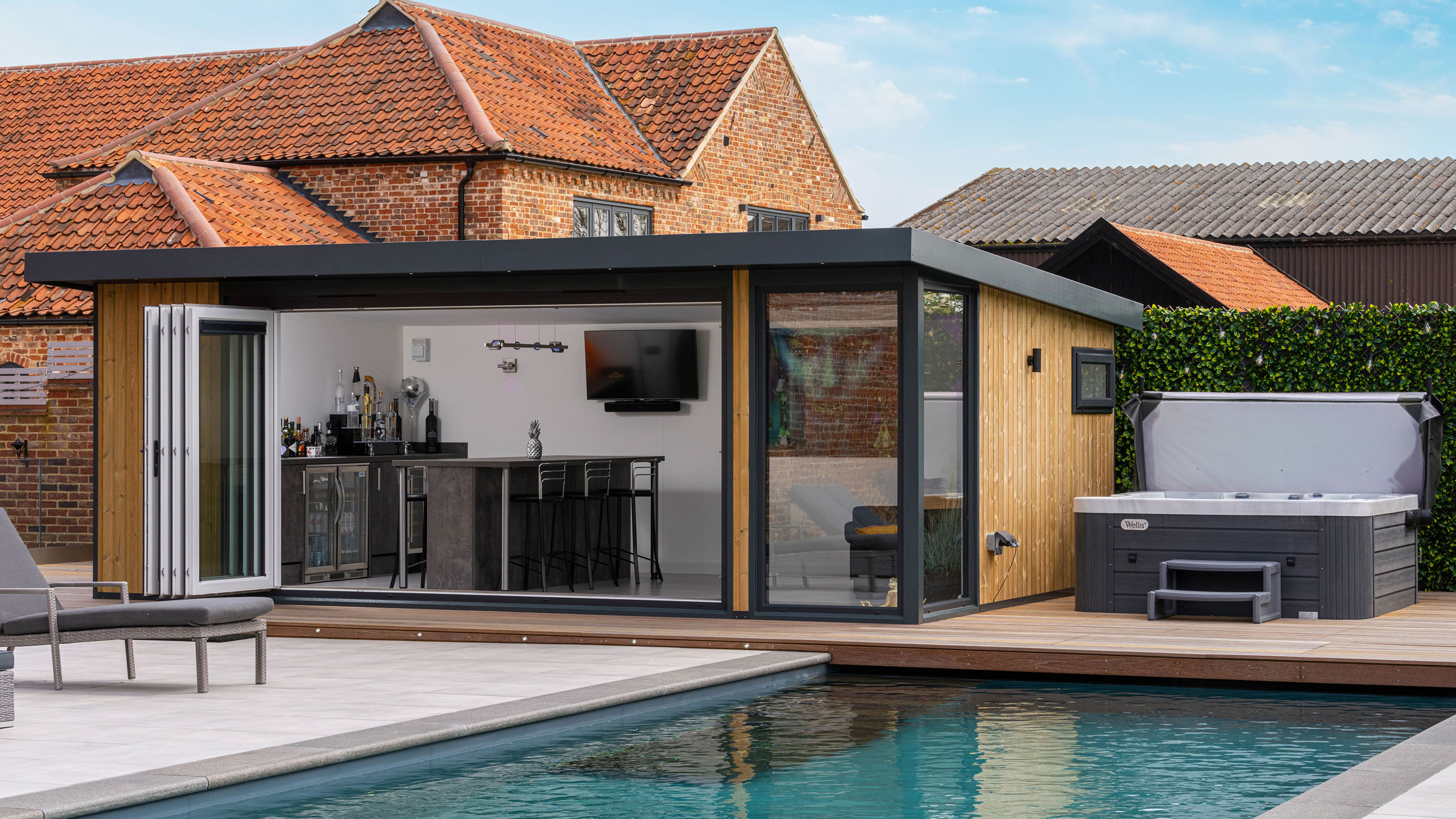
If you choose decking, make sure to check out our decking costs guide so you know how much to budget and our 10 decking maintenance tips to keep it in good condition. If you go for a patio, check out our how to clean patio slabs to keep them looking good.
Natasha was Homebuilding & Renovating’s Associate Content Editor and was a member of the Homebuilding team for over two decades. In her role on Homebuilding & Renovating she imparted her knowledge on a wide range of renovation topics, from window condensation to renovating bathrooms, to removing walls and adding an extension. She continues to write for Homebuilding on these topics, and more. An experienced journalist and renovation expert, she also writes for a number of other homes titles, including Homes & Gardens and Ideal Homes. Over the years Natasha has renovated and carried out a side extension to a Victorian terrace. She is currently living in the rural Edwardian cottage she renovated and extended on a largely DIY basis, living on site for the duration of the project.
